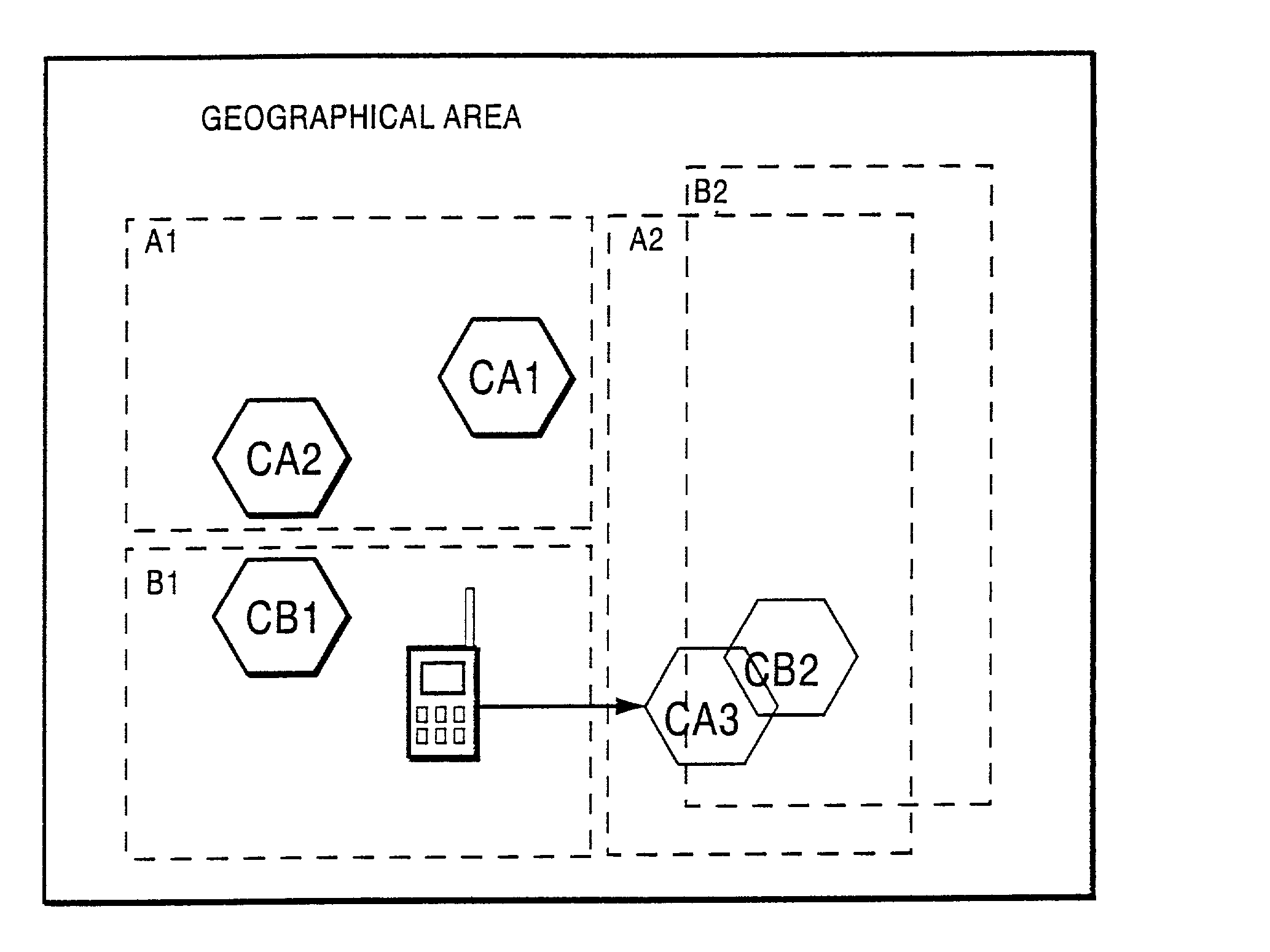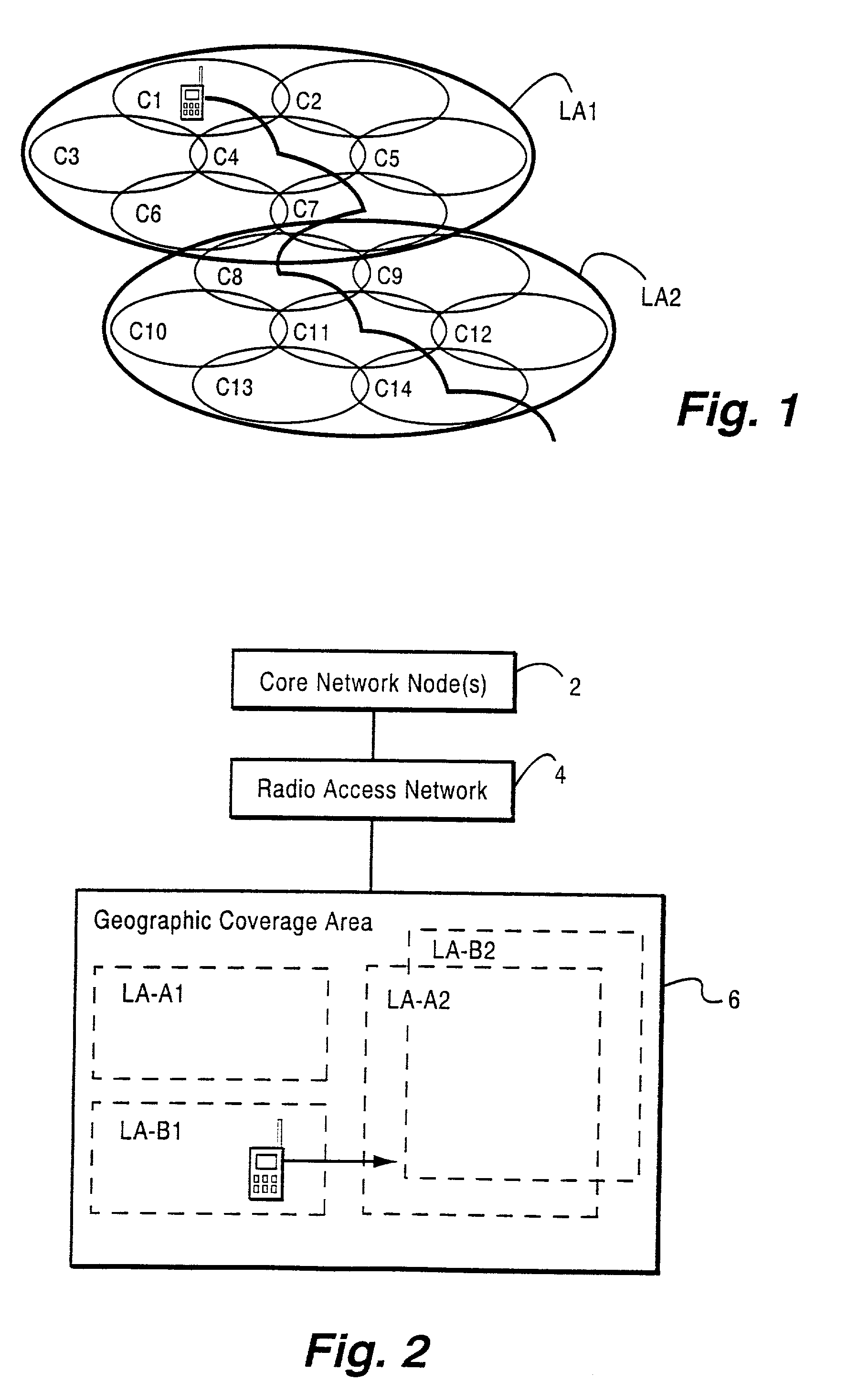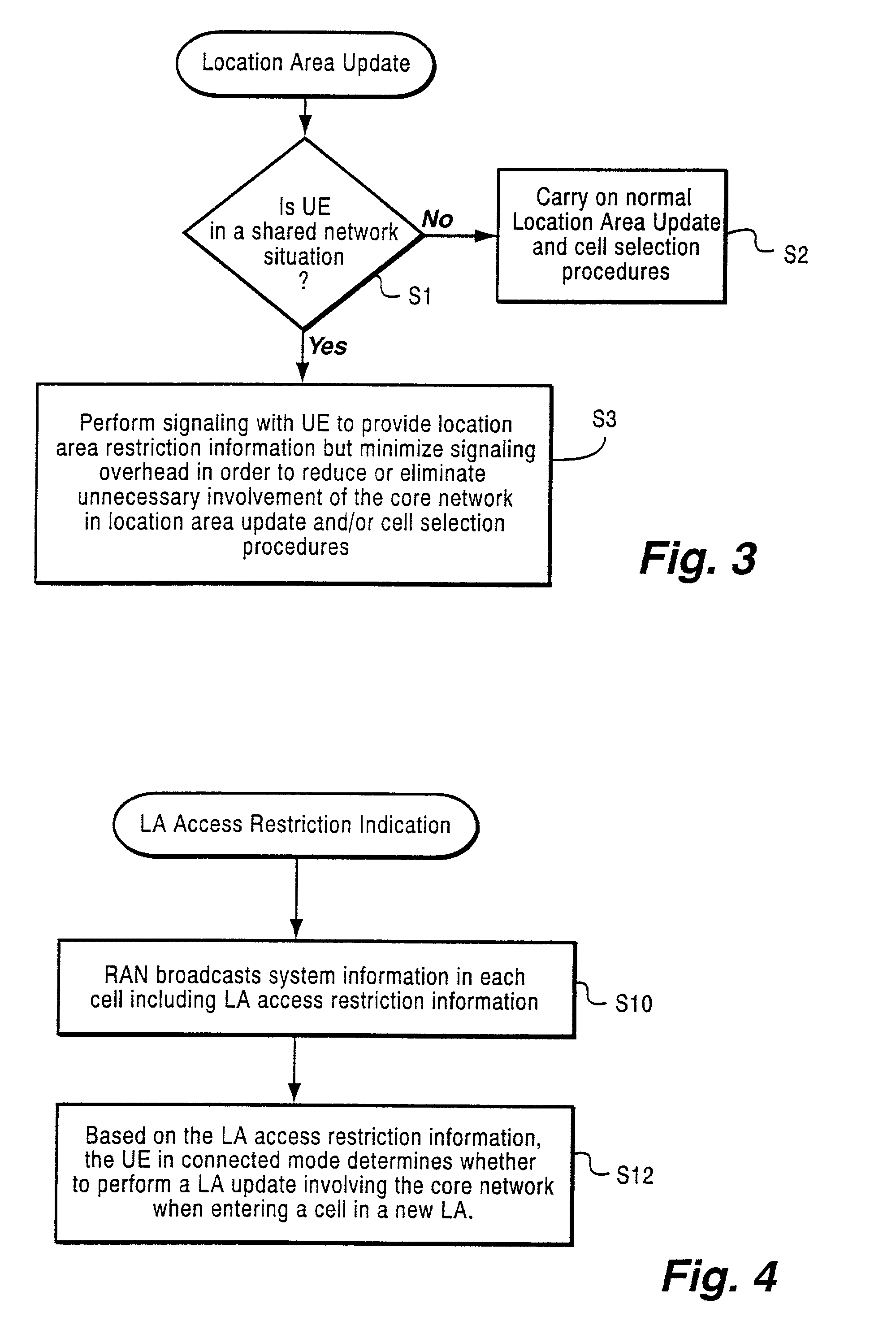Method and apparatus for location area updating in cellular communications
a technology of cellular communication and location area, applied in the direction of electrical apparatus, wireless communication services, wireless communication services, etc., can solve the problems of high paging cost, low paging cost, and tension in the network mobility process, so as to reduce or eliminate unnecessary involvement of the core network, minimize the amount of location area update signaling, and minimize the effect of signaling overhead
- Summary
- Abstract
- Description
- Claims
- Application Information
AI Technical Summary
Benefits of technology
Problems solved by technology
Method used
Image
Examples
Embodiment Construction
message that includes a location area ID for that location area and an access restriction indication. The message is transmitted via the base station over a broadcast channel for the new cell being considered for selection by the mobile radio terminal. The mobile terminal checks that SYSTEM INFORMATION message to determine if the cell is in a new location area. If not, no further location area update is necessary. However, if the cell is in a new location area, the mobile terminal examines the address restriction indicator (ARI) in the SYSTEM INFORMATION message. If it is not set (false), the mobile user equipment terminal does not send a location update request to the core network. On the other hand, if the ARI is set (true), the radio terminal sends a LOCATION UPDATING REQUEST message to the core network. From that message, the core network detects the mobile terminal's IMSI and determines whether it is permitted in the new location area, e.g., by comparing it to a list of mobile ...
PUM
 Login to View More
Login to View More Abstract
Description
Claims
Application Information
 Login to View More
Login to View More - R&D
- Intellectual Property
- Life Sciences
- Materials
- Tech Scout
- Unparalleled Data Quality
- Higher Quality Content
- 60% Fewer Hallucinations
Browse by: Latest US Patents, China's latest patents, Technical Efficacy Thesaurus, Application Domain, Technology Topic, Popular Technical Reports.
© 2025 PatSnap. All rights reserved.Legal|Privacy policy|Modern Slavery Act Transparency Statement|Sitemap|About US| Contact US: help@patsnap.com



